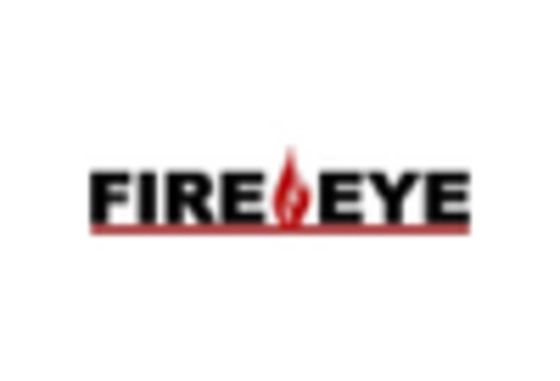Rising Cyber Threat Landscape
The increasing frequency and sophistication of cyber threats is a primary driver for the Cyber Situational Awareness Market. Organizations are facing a myriad of cyber attacks, including ransomware, phishing, and advanced persistent threats. According to recent data, the number of reported cyber incidents has surged, prompting businesses to invest in situational awareness solutions. This trend indicates a growing recognition of the need for proactive measures to mitigate risks. As cyber threats evolve, the demand for advanced monitoring and response capabilities is likely to escalate, thereby propelling the Cyber Situational Awareness Market forward. Companies are now prioritizing investments in technologies that enhance their ability to detect, analyze, and respond to potential threats in real-time.
Adoption of Cloud-Based Solutions
The shift towards cloud computing is reshaping the Cyber Situational Awareness Market. As organizations increasingly migrate their operations to the cloud, the need for situational awareness tools that can effectively monitor and secure cloud environments becomes paramount. Cloud-based solutions offer scalability, flexibility, and cost-effectiveness, making them attractive to businesses of all sizes. Market data suggests that the adoption of cloud services is projected to grow significantly, leading to a corresponding rise in demand for situational awareness solutions tailored for cloud infrastructures. This trend indicates that organizations are recognizing the necessity of maintaining visibility and control over their cloud assets, thereby driving growth in the Cyber Situational Awareness Market.
Increased Regulatory Requirements
The Cyber Situational Awareness Market is significantly influenced by the tightening of regulatory frameworks surrounding data protection and cybersecurity. Governments and regulatory bodies are implementing stringent compliance requirements, compelling organizations to adopt robust situational awareness solutions. For instance, regulations such as the General Data Protection Regulation (GDPR) and the Cybersecurity Information Sharing Act (CISA) necessitate enhanced monitoring and reporting capabilities. As organizations strive to meet these regulatory demands, the market for cyber situational awareness tools is expected to expand. The need for compliance not only drives investment in technology but also fosters a culture of security awareness within organizations, further solidifying the importance of the Cyber Situational Awareness Market.
Integration of Advanced Technologies
The integration of advanced technologies such as artificial intelligence (AI) and machine learning (ML) is a crucial driver for the Cyber Situational Awareness Market. These technologies enhance the ability to analyze vast amounts of data, identify patterns, and predict potential threats. Organizations are increasingly leveraging AI and ML to automate threat detection and response processes, thereby improving their overall security posture. The market for AI-driven cybersecurity solutions is expected to witness substantial growth, reflecting the industry's shift towards more intelligent and adaptive security measures. This integration not only streamlines operations but also empowers organizations to respond more effectively to emerging threats, underscoring the significance of the Cyber Situational Awareness Market.
Growing Awareness of Cybersecurity Risks
The heightened awareness of cybersecurity risks among organizations and individuals is propelling the Cyber Situational Awareness Market. As high-profile data breaches and cyber incidents make headlines, stakeholders are becoming more cognizant of the potential repercussions of inadequate cybersecurity measures. This awareness is driving organizations to invest in situational awareness solutions that provide comprehensive visibility into their security posture. Market trends indicate that businesses are increasingly prioritizing cybersecurity in their strategic planning, leading to a surge in demand for tools that facilitate real-time monitoring and threat detection. The growing recognition of cybersecurity as a critical business function is likely to sustain the momentum of the Cyber Situational Awareness Market.


















Leave a Comment